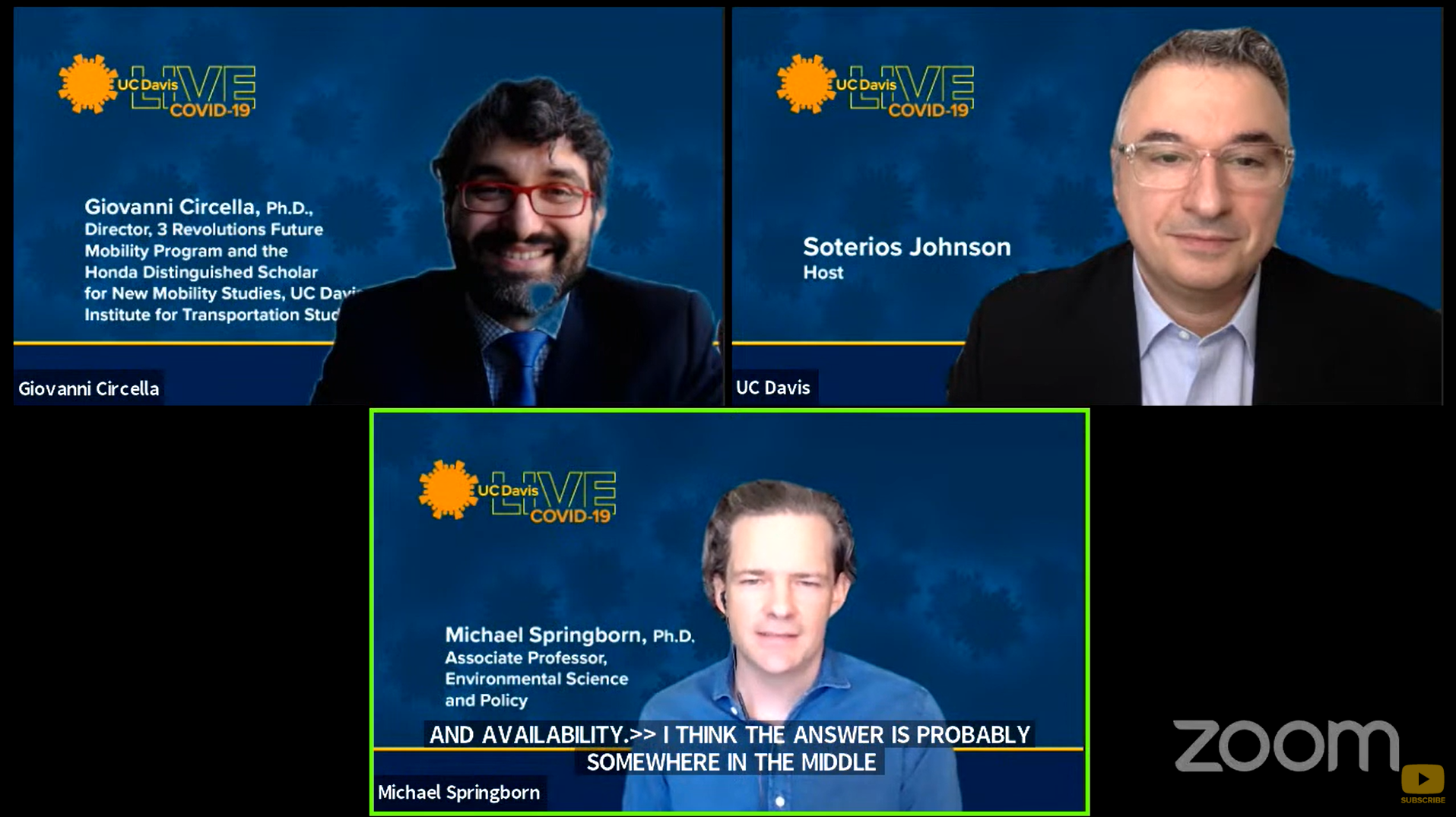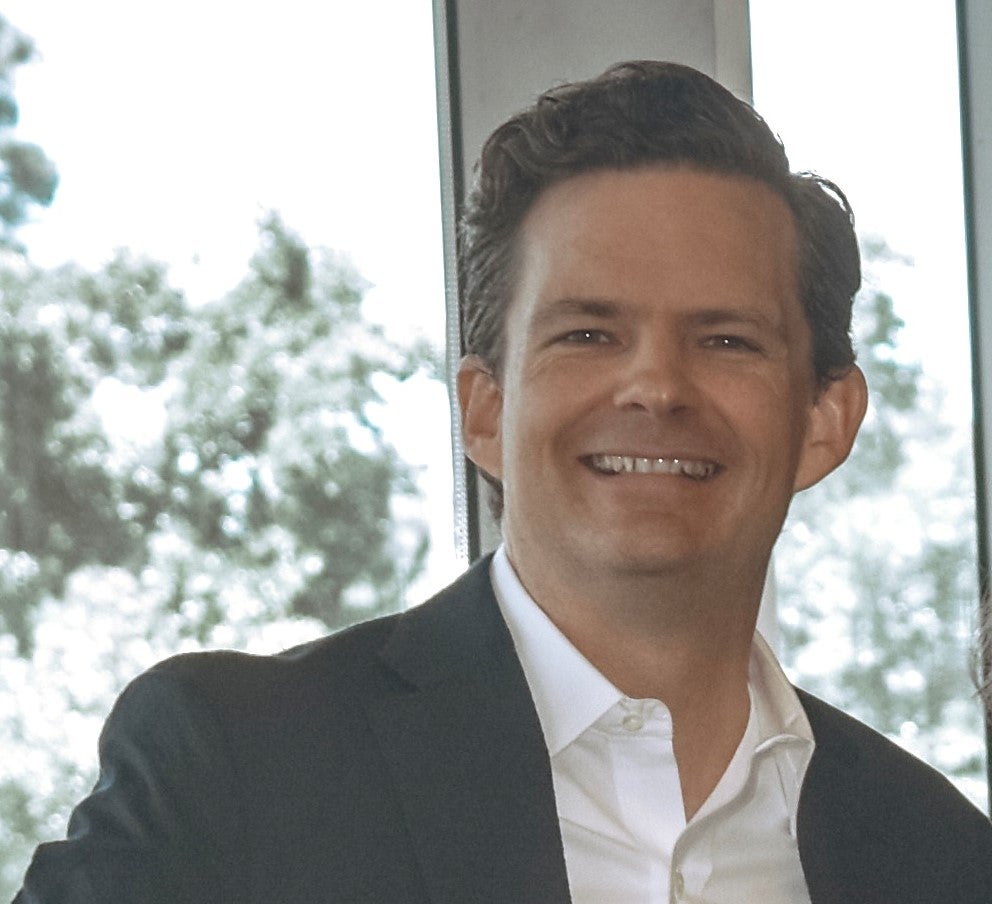 Research interests: I am an environmental and resource economist. I work on problems of resource management and decision-making under environmental risk and uncertainty. I work in several applied areas including disease, invasive species, endangered species, fisheries and climate change. My methods include econometrics, dynamic optimization, and Bayesian learning processes.
Research interests: I am an environmental and resource economist. I work on problems of resource management and decision-making under environmental risk and uncertainty. I work in several applied areas including disease, invasive species, endangered species, fisheries and climate change. My methods include econometrics, dynamic optimization, and Bayesian learning processes.
Current projects: Imported fire ants Kelp
Past projects: Amphibian ecosystem services and malaria COVID-19: social distancing COVID-19: vaccine prioritization Invasives and trade Shadow value viability Approximate dynamic programming
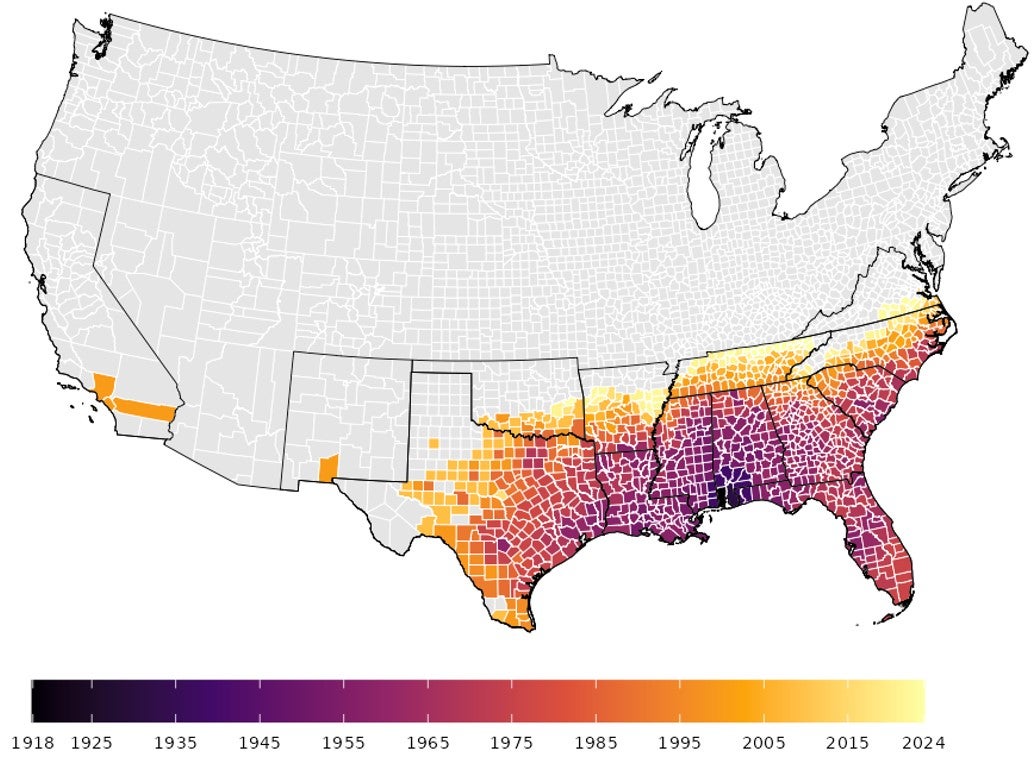
The enemy of my enemy is my friend: evidence of ecosystem disruption benefits from invasive ants. Imported fire ants (IFA), are one of the globe’s most notorious invasive species, for example, featuring in the World Conservation Union’s (IUCN) list of “100 of the World’s Worst Invasive Alien Species”. Since the accidental introduction of both Solenopsis invicta and Solenopsis richteri to the city of Mobile, Alabama approximately a century ago, IFA continues to spread throughout the US southeast despite a federal quarantine and now covers more than 367 million acres across 14 states. In our analysis we take advantage of the natural experiment provided by the decades long expansion of IFA throughout the US southeast to assess impacts on pesticide use, crop choices, and infant mortality rate (IMR). Subsequent to treatment (arrival of IFA to counties) our estimates show a negative and statistically significant effect on the IMR. Turning to the possible mechanism, our event study estimates for effects of IFA arrival on log-pesticide levels parallel our IMR results. The results are opposite of those found in recent studies of pest species outbreaks and illustrate the variety of impacts such ecological shocks can have.

Strategies for Balancing Long-run Tradeoffs
in the Restoration of Kelp Forest and Coastal Economies
in Northern California
Under Environmental Uncertainty. In California, a record-breaking marine heat wave (MHW) between 2013-2015 created a nutrition-poor and warm water environment that contributed to dramatic decline in kelp forest. In addition, an outbreak of starfish wasting disease in 2013 allowed the purple urchin population to explode due to the absence of starfish as predators of purple urchins. These purple urchins then suppressed kelp recovery through excessive grazing on kelp stipes and holdfast. Subsequently, kelp forest cover in Northern California dropped by over 90% and remains largely unrecovered. Red urchin and red abalone populations that depend on kelp and support valuable fisheries then collapsed. We develop a bioeconomic model integrating biology (kelp, red urchins and purple urchins), climate (MHWs), and the red urchin fishery to examine optimal restoration strategies for purple urchin removal and kelp outplanting.

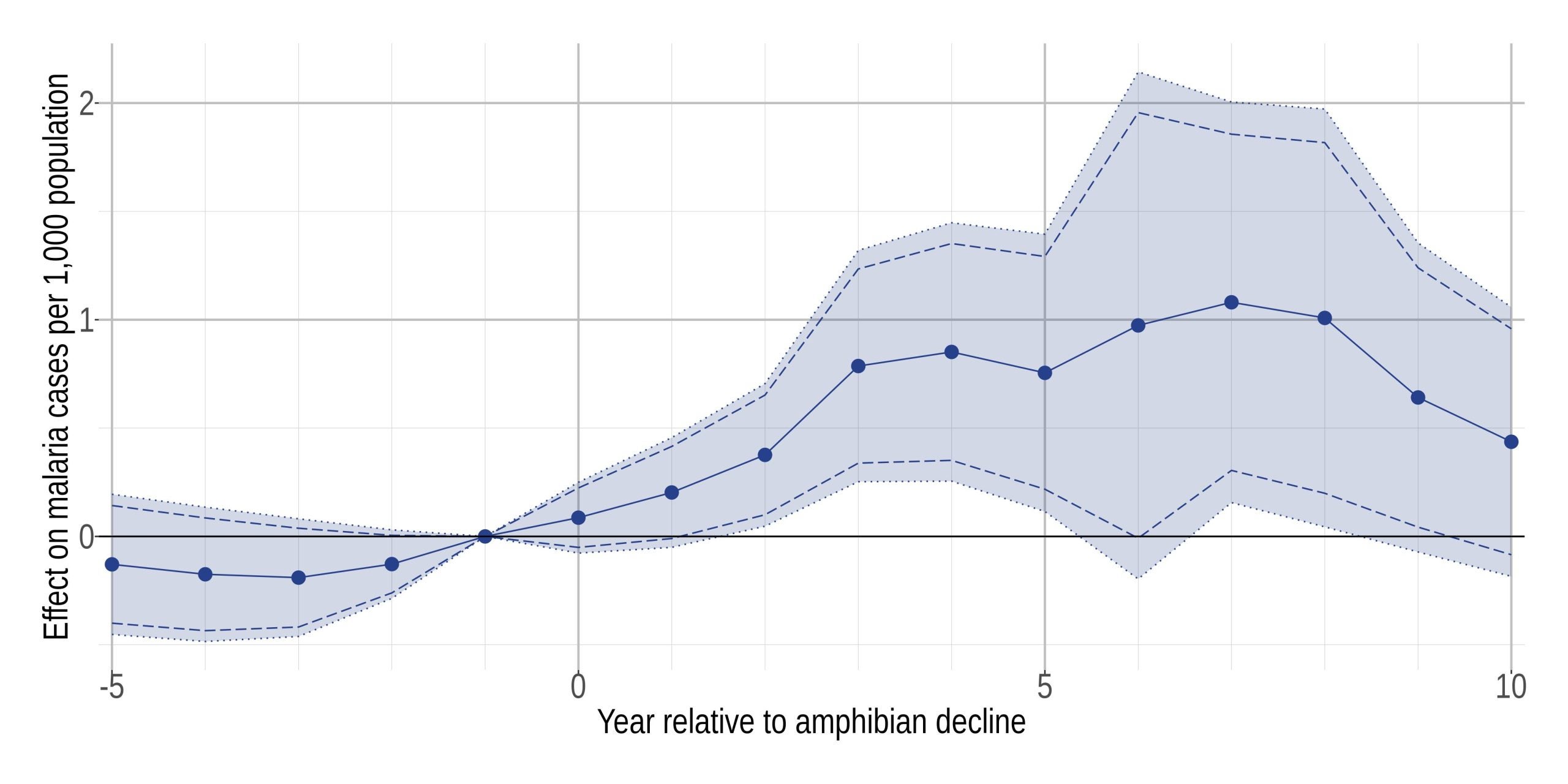
Loss of amphibian ecosystem services and incidence of malaria in Central America. Biodiversity loss from the impacts of invasive pests and pathogens has led massive environmental change. However, measuring the impact on human welfare is often elusive. We leverage a natural experiment involving an invasion wave of the extremely virulent fungal pathogen Batrachochytrium dendrobatidis (Bd) through Central America. Bd is responsible for massive worldwide die-offs from the resulting chytridiomycosis and has arguably caused “the greatest recorded loss of biodiversity attributable to a disease” (1). We match data on loss of amphibians –and the natural disease vector (mosquito) control they represent–with data on annual malaria cases at the cantón (“county”) level. We provide the first causal estimate of the impact of amphibian declines on an important human health outcome. The results have implications for international live species trading policies and the value of conservation.
Michael R. Springborn, Joakim A. Weill, Karen R. Lips, Roberto Ibáñez, and Aniruddha Ghosh. Amphibian Collapses Increased Malaria Incidence in Central America. Environmental Research Letters, 2022, 17(10).
Media coverage: Wired, New Scientist, The Guardian, Le Monde, Nature – Outlook

COVID-19 and social distancing. In the absence of a vaccine, social distancing is a key tool to reduce the transmission of COVID-19. We show that social distancing following US state-level emergency declarations substantially varies by income. Using mobile device location data and an event study design focusing on behavior subsequent to state emergency orders, we document a reversal in the ordering of social distancing by income: wealthy areas went from most mobile before the pandemic to least mobile, while, for multiple measures, the poorest areas went from least mobile to most. Previous research has shown that lower income communities have higher levels of preexisting health conditions and lower access to healthcare. Combining this with our core finding—that lower income communities exhibit less social distancing—suggests a double burden of the COVID-19 pandemic with stark distributional implications.
Joakim A. Weill, Matthieu Stigler, Olivier Deschenes, Michael R. Springborn. Social distancing responses to COVID-19 emergency declarations strongly differentiated by income. Proceedings of the National Academy of Sciences, 2020, 202009412.
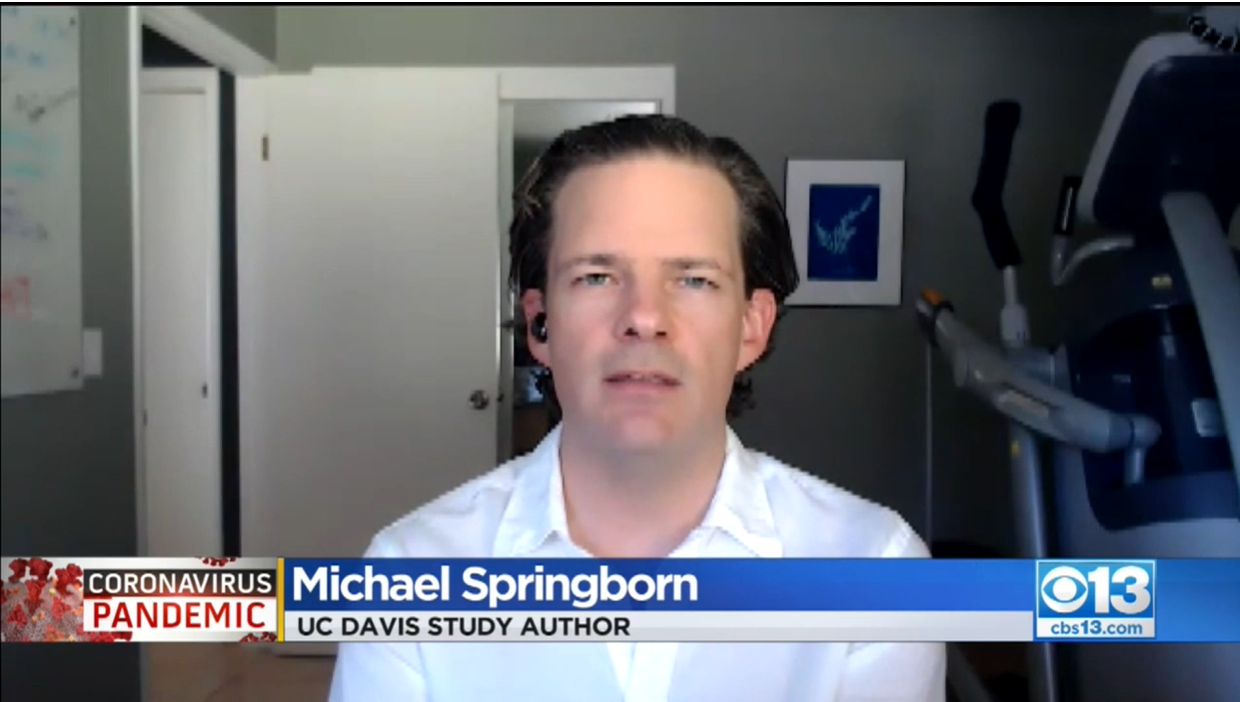 Media coverage: NY Times, LA Times, Wired, New York Post, The Sac Bee, CBS Sacramento, KNX 1070 Newsradio Los Angeles
Media coverage: NY Times, LA Times, Wired, New York Post, The Sac Bee, CBS Sacramento, KNX 1070 Newsradio Los Angeles
I discussed this research as a panelist on UC Davis LIVE: COVID-19 Edition – Transportation, mobility and society.
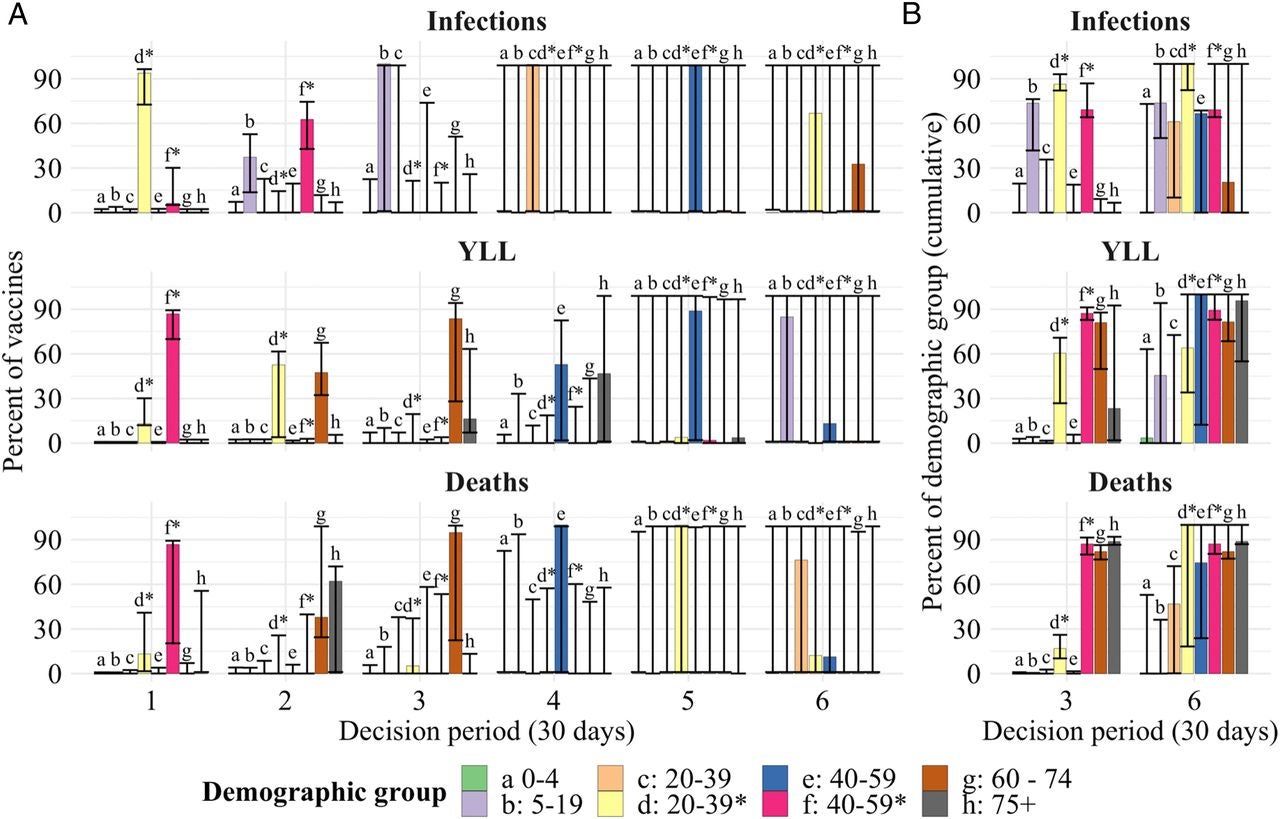
COVID-19 vaccine prioritization. We explore the optimal allocation over time of limited COVID-19 vaccine supply in the U.S. across demographic groups differentiated by age and frontline essential worker status. Disease dynamics are modeled using a compartmental model parameterized to capture existing knowledge of COVID-19. We consider three alternatives objectives: minimizing expected cases, years of life lost, or deaths. We allow for vaccine prioritization to change over time (each month for several months) in response to changes in underlying population conditions (shares of the population in different disease states).
Jack H. Buckner, Gerardo Chowell and Michael R. Springborn. Dynamic Prioritization of COVID-19 Vaccines When Social Distancing is Limited for Essential Workers. Proceedings of the National Academy of Sciences, 118(16), 2021.
Media coverage: Scientific American, FiveThirtyEight
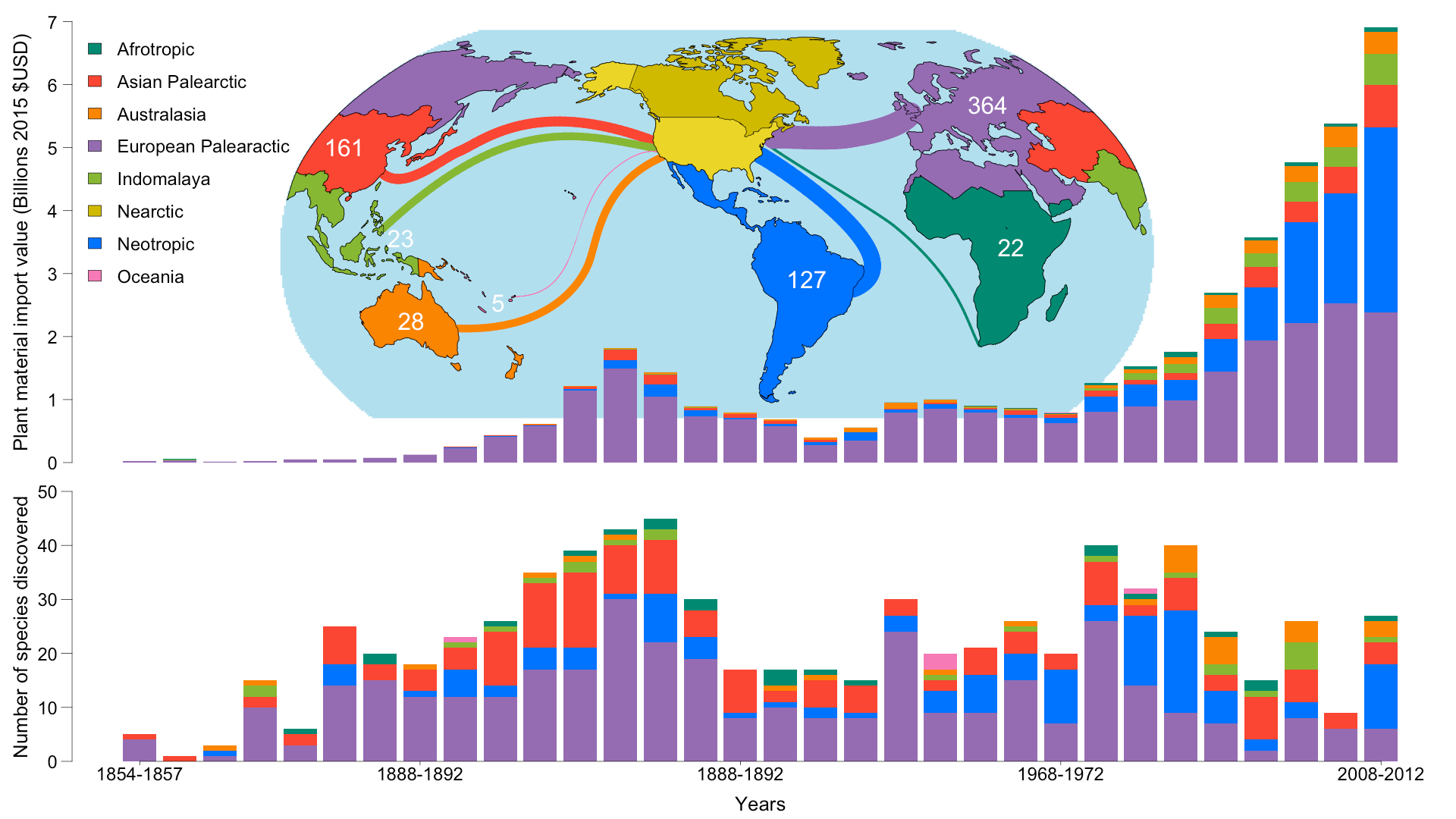
Invasive species and trade. What is the risk of unintentionally delivering invasive hitchhikers via international trade? How does this risk change over time and vary by trading partner? In this project our leading analysis uses 150 years of ecological and economic data in the United States to understand the dynamics of establishments.
Matthew MacLachlan, Andrew Liebhold, Takehiko Yamanaka and Michael R. Springborn. Hidden patterns of insect establishment risk revealed from two centuries of alien species discoveries. Science Advances, 2021, 7(44).
Click “Show more” below for a video animation of the import-introduction process and additional project information.
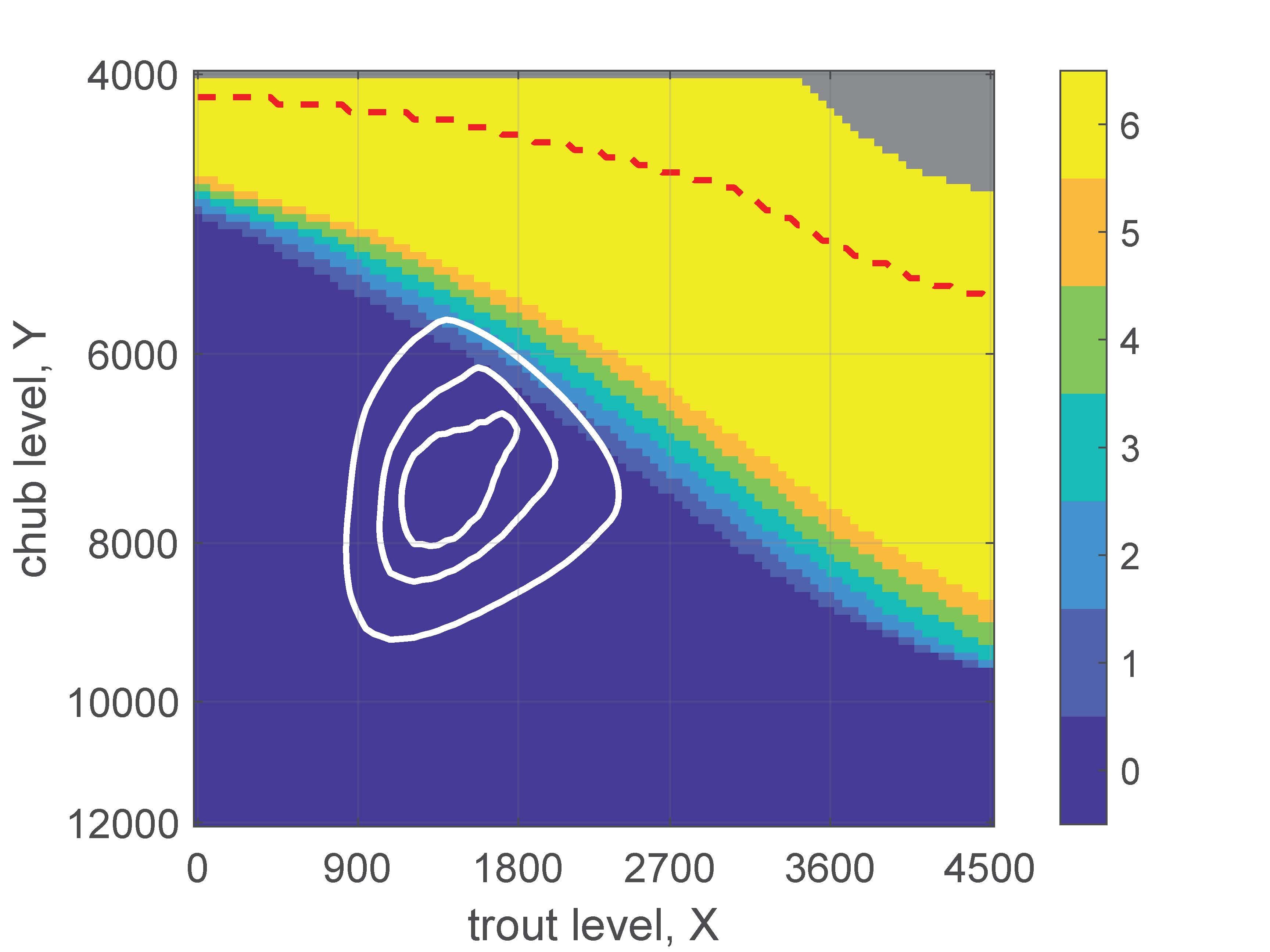
Shadow value viability–safely avoiding dangerous thresholds: Climate change mitigation, endangered species conservation and controlling infectious diseases are examples of a class of management problems with two key features: (1) avoiding thresholds–like 1.5 degrees Celsius warming, extinction, or outbreak–is key; (2) damages from violating the threshold are extreme but impossible to estimate with precision. Instead of maximizing ill-captured net benefits, pragmatic focus turns to avoiding the threshold with a given confidence at the least possible cost.
Such problems are notoriously difficult to solve (given loss of the Markov property from the “joint-chance constraint” created by the confidence-constrained objective). We develop a novel “shadow value viability” approach to solve the problem which also returns important economic intuition about the implicit cost of violating the threshold.
Click “Show more” below for papers on this topic.
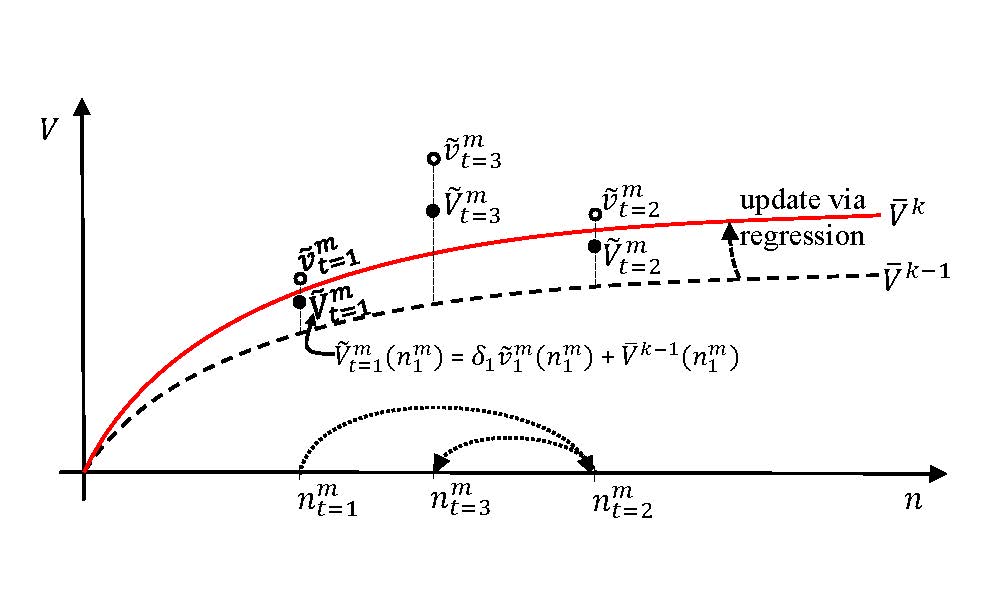
Approximate dynamic programming: Ecosystem-based management demands that decisions account for more than just a homogeneous resource stock–stock diversity (genetics, age, etc.) and conditions of the ecosystem economic system all matter. Standard dynamic optimization techniques (e.g. value function iteration) become unwieldy under large state spaces and/or complex uncertainty. We adapt approximate dynamic programming (ADP)–novel to environmental and resource economics–to overcome computational limitations. The simulation-based approach allows for a large state space easily incorporates complex, multiple uncertainty without the need for quadrature.
Click “Show more” below for papers under review on this topic.

